UPSC Daily Current Affairs: 7th January 2025 | Current Affairs & Hindu Analysis: Daily, Weekly & Monthly PDF Download
GS3/Science and Technology
Nanopore Technology
Source: Nature
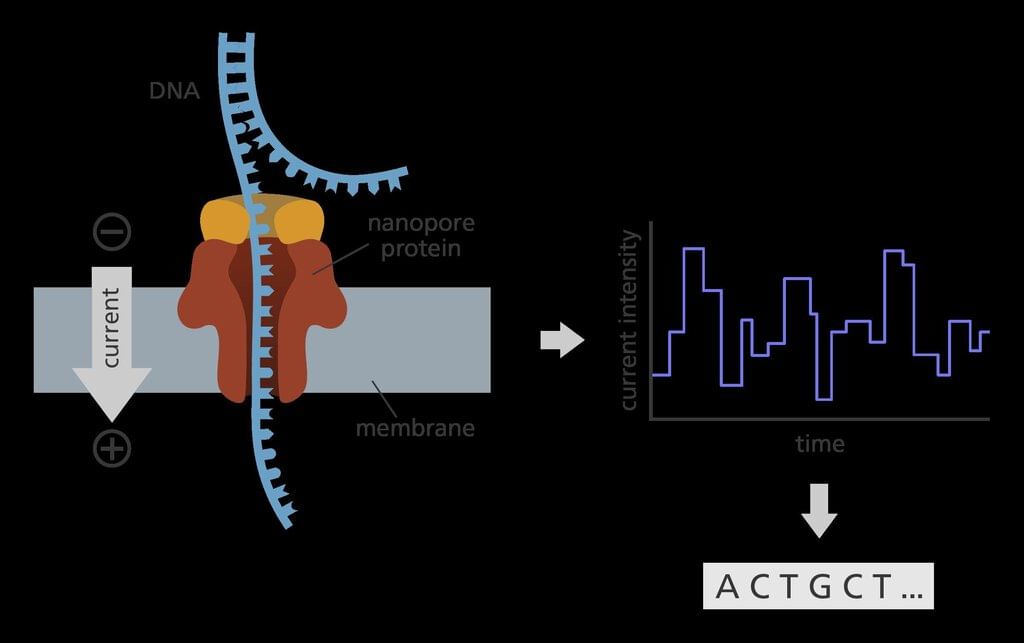 Why in News?
Why in News?Researchers at the University of California have developed a nanopore-based diagnostic tool capable of detecting illnesses more quickly and accurately by analyzing signals from individual molecules.
- The nanopore-based tool represents a significant advancement in disease diagnostics.
- It allows for ultra-sensitive detection of individual molecules, such as DNA and proteins.
Additional Details
- Nanopore Technology: This groundbreaking innovation was developed by UC Riverside scientists and utilizes nanopores—tiny openings that can detect individual molecules.
- How it Works: Biological samples mixed with salts create a flow through the nanopore. When a DNA or protein molecule passes through, it blocks this flow, resulting in a measurable reduction in ion flow that identifies the molecule.
- Advanced circuitry is in place to account for missed signals, ensuring precise detection.
- Nanopores filter out background noise, which contrasts with traditional systems that require external filtering, thereby preserving critical diagnostic data.
Significance of Nanopore Technology
- It can detect infections within 24 to 48 hours, significantly faster than traditional methods.
- It is particularly vital for responding to fast-spreading diseases, allowing for timely medical intervention.
- The technology captures signals from single molecules, eliminating the need for large biological samples.
- It has the potential to revolutionize home testing and clinic-based diagnostics.
- The tool can identify subtle differences in proteins, facilitating personalized treatment plans.
- It enhances our understanding of how proteins influence health and disease.
- Furthermore, it paves the way for single-molecule protein sequencing, offering insights that extend beyond traditional DNA sequencing.
In conclusion, nanopore technology represents a transformative leap in diagnostic capabilities, promising rapid and accurate disease detection, which is crucial in our ongoing fight against infectious diseases.
Previous Year Question (PYQ)
With reference to the use of nanotechnology in the health sector, which of the following statements is/are correct?
1. Targeted drug delivery is made possible by nanotechnology.
2. Nanotechnology can largely contribute to gene therapy.
Select the correct answer using the codes given below:
(a) 1 only
(b) 2 only
(c) Both 1 and 2
(d) Neither 1 nor 2
GS3/Economy
UJALA: 10 Years of Energy-Efficient Lighting
Source: PIB
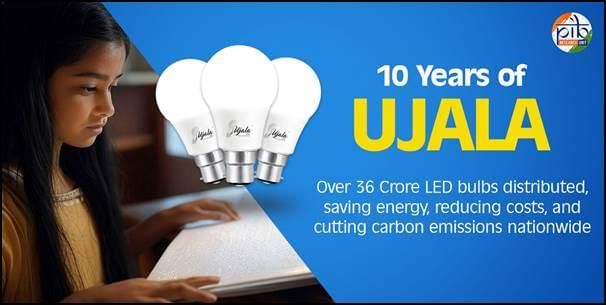 Why in News?
Why in News?The UJALA (Unnat Jyoti by Affordable LEDs for All) scheme, which was launched on January 5, 2015, has successfully completed a decade, marking significant advancements in energy-efficient lighting across India.
- The UJALA scheme is recognized as the world's largest zero-subsidy domestic lighting initiative.
- It has played a crucial role in promoting energy-efficient LED appliances in households.
Additional Details
- Launch Details: The scheme was launched by PM Narendra Modi on January 5, 2015, originally known as the Domestic Efficient Lighting Programme (DELP).
- Implementation: Managed by Energy Efficiency Services Limited (EESL) under the Ministry of Power, the scheme employs competitive bidding to lower prices for LED appliances.
- Affordability: LED prices have been significantly reduced compared to market rates (e.g., ₹70 per bulb, ₹220 per tube light).
- Energy Consumption: LEDs consume 90% less energy than incandescent lamps (ICLs) and 50% less than CFLs, leading to substantial cost savings on electricity bills.
- Market Impact: Over 407 crore LED bulbs have been sold in India, contributing to a major transformation in the lighting market.
- Environmental Benefits: The adoption of LEDs has resulted in a notable reduction in carbon emissions, supporting India’s climate goals.
The UJALA scheme has not only improved energy efficiency but also enhanced the affordability of lighting solutions for households, contributing to a sustainable future.
Previous Year Question (PYQ):
2021: With reference to street lighting, how do sodium lamps differ from LED lamps?
- Sodium lamps produce light in 360 degrees, while LED lamps do not.
- Sodium lamps typically have a longer lifespan compared to LED lamps.
- The spectrum of visible light from sodium lamps is almost monochromatic, whereas LED lamps provide significant color advantages in street lighting.
Select the correct answer using the code given below:
- (a) 3 only
- (b) 2 only
- (c) 1 and 3 only
- (d) 1, 2 and 3
GS2/International Relations
Net Zero Banking Alliance (NZBA)
Source: Reuters
 Why in News?
Why in News?Recently, several major financial institutions on Wall Street have withdrawn from the Net-Zero Banking Alliance (NZBA), a previously prominent group focused on sustainable finance. This shift indicates a growing tension between banks and political pressures related to climate commitments.
- The Net-Zero Banking Alliance was established on April 21, 2021, under the United Nations Environment Programme Finance Initiative (UNEP FI).
- It aims for banks to align their financial activities with net-zero greenhouse gas emissions by 2050.
- Prominent banks such as Goldman Sachs, Wells Fargo, Citigroup, Bank of America, and Morgan Stanley have recently exited the alliance.
- The NZBA continues to have 142 members from 44 countries, representing nearly half of global banking assets.
Additional Details
- Commitments by Banks:By joining the NZBA, banks agree to:
- Align their lending and investment portfolios with net-zero emissions by 2050.
- Set interim targets for 2030 or earlier.
- Focus on the most carbon-intensive sectors.
- Report annually on their progress and emissions.
- The departure of US banks from the NZBA reflects their attempts to avoid increasing political scrutiny as Donald Trump returns to influence in U.S. politics.
The recent withdrawals from the NZBA highlight the challenges faced by financial institutions in balancing sustainability commitments with political and economic pressures. As the landscape evolves, the future of such alliances remains uncertain.
GS3/Economy
Production Linked Incentive Scheme 1.1
Source: PIB
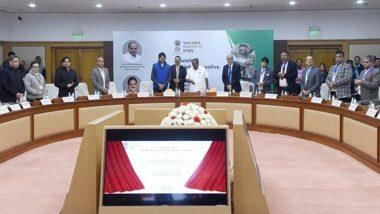 Why in News?
Why in News?The Union Minister of Steel and Heavy Industries has recently launched the second round of the Production Linked Incentive (PLI) scheme for Specialty Steel, referred to as PLI Scheme 1.1. This initiative aims to bolster domestic steel production and reduce imports by attracting capital investments.
- The PLI Scheme 1.1 will be implemented from FY 2025-26 to FY 2029-30.
- It covers five product categories: Coated / Plated Steel Products, High Strength / Wear Resistant Steel, Specialty Rails, Alloy Steel Products, and Steel Wires and Electrical Steel.
- The scheme allows carry forward of excess production to the next year for claiming incentives.
- Companies can invest in augmenting existing capacities without necessarily installing new mills.
Additional Details
- Cold-Rolled Grain-Oriented (CRGO) Grade Steel: This is a high-value steel essential for the production of power transformers used in high-tension (HT) power distribution. Notably, the technology to manufacture CRGO is currently unavailable to Indian steelmakers.
- The PLI scheme was initially launched to enhance domestic manufacturing during the COVID-19 pandemic and was later expanded to include the steel sector in November 2020.
The introduction of PLI Scheme 1.1 signifies a strategic move to improve the quality and capacity of steel production in India, aligning with the government's objective of self-reliance in the steel industry.
GS1/Geography
Key Facts about Alakananda River
Source: Times of India
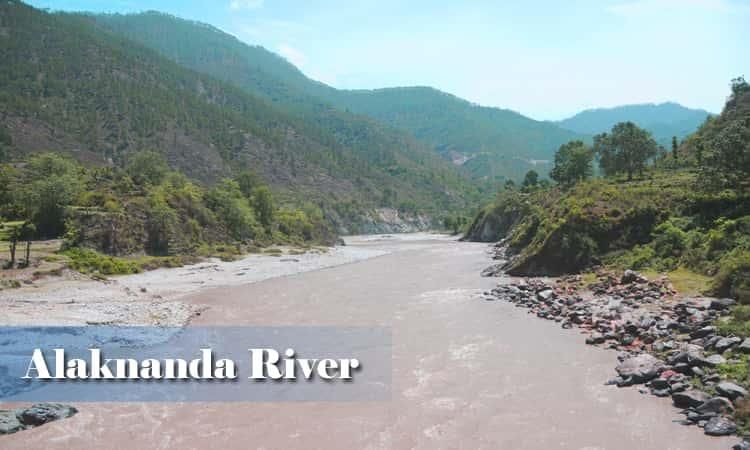 Why in News?
Why in News?The Alaknanda River, flowing through the Garhwal region of Uttarakhand, has been identified as the most vulnerable river to landslide-induced natural dams, according to a recent study conducted by researchers at IIT Roorkee.
- The Alaknanda River is one of the main headstreams of the Ganges River, alongside the Bhagirathi River.
- It originates from the meltwaters of the Satopanth and Bhagirath Kharak glaciers in the Garhwal Himalayas.
- The river features numerous tributaries, with five major confluences known as Panch Prayag.
Additional Details
- Panch Prayag:The five major confluences are:
- Vishnuprayag: Alaknanda meets Dhauliganga
- Nandprayag: Alaknanda meets Nandakini
- Karnaprayag: Alaknanda meets Pindar
- Rudraprayag: Alaknanda meets Mandakini
- Devprayag: Alaknanda meets Bhagirathi, marking the formation of the Ganges.
- The total distance from the source of Alaknanda to its confluence with Bhagirathi is approximately 190 km.
- Significant pilgrimage sites along the Alaknanda include Badrinath, Hemkund Sahib, and Joshimath.
- The Alaknanda River valley is a crucial component of the Char Dham Yatra, which includes the sacred sites of Badrinath, Kedarnath, Gangotri, and Yamunotri.
Understanding the vulnerabilities of the Alaknanda River is essential for implementing effective conservation strategies and ensuring the safety of the surrounding communities.
GS3/Environment
Water Gushes Out from Underground in Rajasthan Village
Source: Indian Express
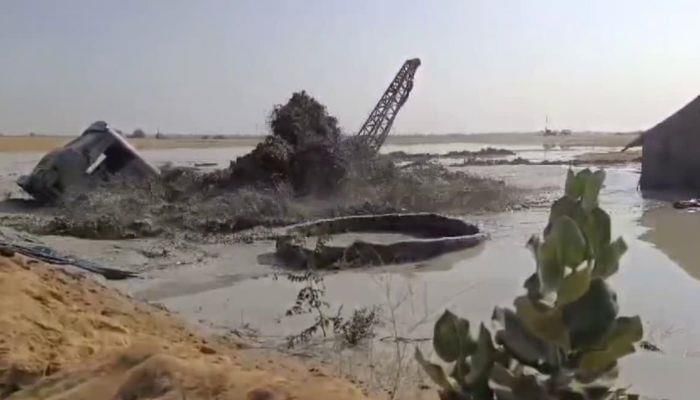 Why in News?
Why in News?Residents of Taranagar village in Jaisalmer, Rajasthan, witnessed an extraordinary event from December 27 to December 29, where large volumes of water unexpectedly surged from underground sources. This occurrence ceased naturally without any human intervention.
- Water gushed from underground during the drilling of a tube well, causing significant local flooding.
- Experts clarified that this water is ancient and not connected to the mythological Saraswati River.
Additional Details
- Incident Overview: A farmer in the Mohangarh area commissioned a firm to dig a tube well. At a depth of 850 feet, water erupted at high pressure, resulting in flooding of approximately 25 bighas of nearby land, along with damage to a truck and drilling equipment.
- Gas Release: The water flow was accompanied by a small amount of non-inflammable gas, indicating geological activity.
- Geological Explanation: Experts from the Rajasthan State Ground Water Department described the event as an "artesian condition," where the natural pressure underground forces water to the surface.
- Definition of Artesian Aquifer: According to the United States Geological Survey, an artesian aquifer is one that stores water under pressure between impermeable layers of sediment and soil, often referred to as "confined" water.
- Key Characteristics:
- Confined Water: Water is held in layers of rock or soil, creating pressure that can force it to the surface.
- Natural Flow: Water can flow freely from the well without pumping due to underground pressure.
- Depth: Artesian wells generally access deeper sources compared to regular wells.
- Formation: Artesian wells form when water from a higher elevation is confined between impermeable layers, causing it to rise when a well is drilled.
- Difference from Normal Wells: Unlike regular wells, artesian water can naturally flow to the surface due to high pressure from surrounding rock, which is not the case in typical tube wells.
- Geological Context: In desert regions, water can be trapped beneath sandstone layers, and when these layers are breached, water may erupt due to intense underground pressure.
- Unique Observation: While similar phenomena have been noted in other areas, the intensity of water flow in Taranagar was remarkable and unprecedented.
- Global Occurrence: Artesian conditions have been documented in desert regions, including Australia and Africa.
This surprising event underscores the complex geological conditions present in Rajasthan and serves as a reminder of the hidden water resources that can emerge under specific circumstances.
GS1/Geography
Crimea: Recent Developments and Key Information
Source: Al Jazeera
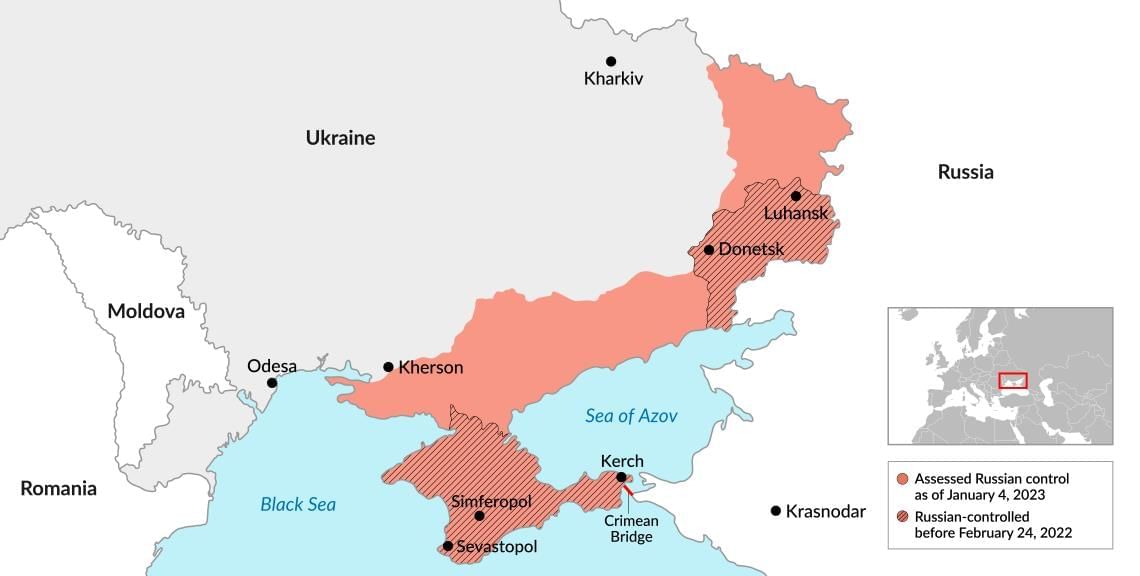 Why in News?
Why in News?On Saturday, Russian officials in Crimea announced a regional emergency due to the discovery of oil on the shores of Sevastopol, the largest city on the peninsula. This situation arose following a fuel oil spill from two storm-damaged tankers in the Kerch Strait, approximately 250 kilometers from Sevastopol, which is located on Crimea's southwestern coast.
- Crimea is a peninsula in Eastern Europe, situated on the northern coast of the Black Sea, surrounded by both the Black Sea and the Sea of Azov.
- The peninsula consists of three primary geographical zones: mountains, steppe, and the southern coast, with the Crimean Mountains reaching a maximum height of 1,545 meters at Roman-Kosh.
- Crimea features various water bodies, including notable rivers such as Salhyr, Alma, Kacha, and Belbek, along with several salt pans and salty lakes, the largest being Lake Sasyk.
- Historically, Crimea was part of Ukraine until its annexation by Russia in 2014, a move that faced widespread condemnation from the international community.
Additional Details
- Agriculture: The steppe region of Crimea is extensively utilized for agricultural purposes, cultivating crops such as winter wheat, corn, potatoes, and sunflowers.
- Industry: Crimea is known for its spa industry, driven by its mud volcanoes and mineral springs, as well as significant iron ore mining activities in the Kerch Peninsula.
- Crimea Bridge: Completed in 2018, this bridge connects Crimea with Russia by spanning the Strait of Kerch.
In summary, the recent oil spill incident highlights ongoing environmental and geopolitical issues in Crimea. The region's complex history and diverse geographical features continue to play a significant role in its economic activities and international relations.
GS3/Science and Technology
ISRO's Breakthrough in Space Agriculture
Source: Mint
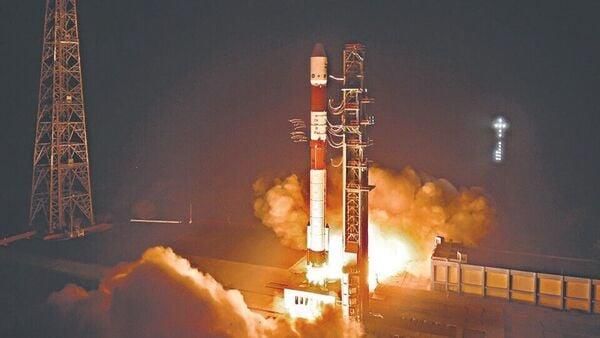 Why in News?
Why in News?ISRO has reached a significant milestone in the field of space agriculture with the successful deployment of its Compact Research Module for Orbital Plant Studies (CROPS) during the PSLV-C60 mission. The successful germination of cowpea seeds in a microgravity environment represents a pivotal advancement in our understanding of plant biology in space.
- Successful germination of cowpea seeds aboard the PSLV-C60 mission.
- The CROPS mission aims to enhance ISRO's capabilities for growing plants in extraterrestrial conditions.
- Insights from the experiment are vital for deep space exploration, particularly for long-duration missions.
Additional Details
- CROPS Mission: The CROPS payload, developed by the Vikram Sarabhai Space Centre (VSSC), is designed as a multi-phase platform to study and sustain plant life in space.
- Launch Details: Launched on December 30, 2024, as part of ISRO's PSLV-C60 mission, the experiment utilized the POEM-4 platform.
- Within four days post-launch, eight cowpea seeds successfully sprouted, indicating potential for plant growth in space.
- Significance: The experiment provides crucial insights into plant adaptation in microgravity, aiding future missions to Mars and contributing to astrobotany research.
- POEM-4 Platform: This platform hosts 24 payloads and highlights the collaboration between various institutions, including ISRO and private sectors, to enhance space science research.
- Sustainable Space Agriculture: The findings could lead to sustainable agricultural practices in space, ensuring food security for astronauts on lengthy missions.
- SpaDeX Mission: A cost-effective technology demonstration mission that includes in-space docking technologies, crucial for future deep space explorations.
In conclusion, ISRO's CROPS mission signifies a considerable advancement in space research, showcasing India's capabilities in astrobotany. The successful germination of cowpea seeds not only represents progress in sustainable space agriculture but also sets the groundwork for future deep-space missions.
GS2/Governance
ENHANCING GOVERNANCE THE DIGITAL WAY
Source: The Hindu
Why in News?
In recent years, India has initiated a significant journey towards the adoption of digital governance. While notable progress has been made, there remains a substantial gap to fully harness the benefits of digital governance.
- Digital governance aims to improve citizen services and enhance government capabilities.
- Governance involves various stakeholders including government bodies, NGOs, and community leaders.
- Technology adoption facilitates better communication and informed decision-making.
Additional Details
- Capacity Building in Digital Governance: There is a crucial need for government employees to become skilled in using digital platforms. Initiatives like the iGOT Karmayogi platform focus on training officials in essential skills such as data analytics and public administration.
- e-Office Initiative: This initiative digitizes government workflows, reducing paperwork and increasing operational efficiency. It enhances communication and transparency through automated file management.
- Government e-Marketplace (GeM): This platform transitions procurement processes online, facilitating smoother operations.
Challenges in Digital Governance
- Resistance to Change: Different segments of the government workforce show varying readiness for adopting new technologies.
- Lack of Incentives: Concerns exist that platforms like iGOT Karmayogi may only serve as attendance trackers unless they lead to tangible outcomes.
- Digital Divide: Many rural areas face limited access to high-speed internet and digital tools.
- Cybersecurity Concerns: The shift online brings risks of data breaches and cyberattacks.
- Continuous Learning Needs: The fast pace of technological advancement necessitates ongoing training and upskilling for government employees.
The Way Forward for Digital Governance
- Robust Infrastructure: Address the digital divide by enhancing connectivity and access to tools in rural areas.
- Targeted Training: Ensure that training programs are adaptive to emerging technologies and result-oriented.
- Cybersecurity Frameworks: Implement strong cybersecurity measures to protect sensitive data.
- Incentives for Innovation: Recognize and reward employees who successfully adopt and implement digital tools.
- Inclusivity: Provide every employee, regardless of rank or background, with the necessary skills to succeed in a digital environment.
In conclusion, while India’s push towards digital governance has made significant strides, it is essential to address existing challenges and continuously promote capacity building to fully realize the potential of digital governance.
GS3/Economy
FAO Statistical Yearbook, 2024
Source: DTE
Why in News?
The Food and Agriculture Organization (FAO) of the United Nations has published its 2024 Statistical Yearbook, which presents a detailed analysis of global agrifood systems, highlighting significant trends and challenges in agriculture.
- The global agricultural value experienced a remarkable 89% increase in real terms from 2000 to 2022, culminating at $3.8 trillion.
- Employment in agriculture has declined significantly, with the workforce in this sector dropping from 40% in 2000 to 26% in 2022.
- Food insecurity remains a pressing issue, with an estimated 733 million people undernourished in 2023, a rise of 152 million since 2019.
- Obesity is on the rise, affecting over 25% of adults in regions like the Americas, Europe, and Oceania.
- Primary crop production surged by 56% between 2000 and 2022, reaching 9.6 billion tonnes.
- Meat production increased by 55%, with chicken overtaking pork as the most produced meat globally in 2022.
- Pesticide usage escalated by 70% from 2000 to 2022, with the Americas responsible for 50% of this usage.
- Inorganic fertilizers usage hit 185 million tonnes in 2022, reflecting a 37% increase since 2000.
- Greenhouse gas emissions from agrifood systems rose by 10%, with livestock accounting for 54% of farm-gate emissions.
- Water scarcity poses significant challenges, particularly in the Near East and North Africa, where countries are withdrawing up to 40 times their renewable freshwater resources annually.
Additional Details
- About FAO: The FAO is a specialized agency of the United Nations dedicated to eradicating hunger, improving nutrition, and ensuring food security globally. Established in 1945 and headquartered in Rome, Italy, it collaborates with member states and communities.
- Mandate and Goals:
- Reduce global hunger and malnutrition through sustainable agricultural practices.
- Support member states in developing resilient and sustainable food systems.
- Provide accurate and high-quality statistical data for policymaking and monitoring.
- Key Functions:
- Conduct research to address pressing issues in agriculture and food systems.
- Support countries with training and resources for sustainable agriculture.
- Publish annual reports and statistical yearbooks to track trends in agrifood systems.
The FAO Statistical Yearbook serves as a vital resource for understanding the ongoing changes in global agrifood systems and the challenges that lie ahead in achieving food security and sustainable agricultural practices.
GS3/Economy
What is the World Gold Council (WGC)?
Source: The Hindu
 Why in News?
Why in News?In November 2024, central banks globally added a total of 53 tonnes of gold to their reserves, with the Reserve Bank of India contributing 8 tonnes, as reported by the World Gold Council (WGC).
- The WGC is a non-profit association representing leading gold producers worldwide.
- Founded in 1987, it focuses on promoting gold through marketing, research, and advocacy.
- It serves as the global authority on gold, providing detailed analyses of the gold market.
Additional Details
- Formation and Purpose: The WGC was established by innovative mining companies to enhance gold demand and usage.
- Headquarters: The organization is based in London, UK.
- Industry Influence: The WGC monitors gold consumption, proposes policies for sustainability, and promotes fair practices in gold mining.
- Publications: They release quarterly reports analyzing gold market trends by sector and geography.
- Research Initiatives: The WGC co-sponsors research to develop new applications and products containing gold.
- Market Coverage: It encompasses markets that account for approximately three-quarters of global gold consumption.
- Innovation: The WGC was instrumental in creating the first gold exchange-traded fund.
Overall, the World Gold Council plays a critical role in the gold industry by advocating for sustainable practices, supporting market development, and providing essential data that informs stakeholders about gold consumption and trends.
|
44 videos|5271 docs|1113 tests
|





















